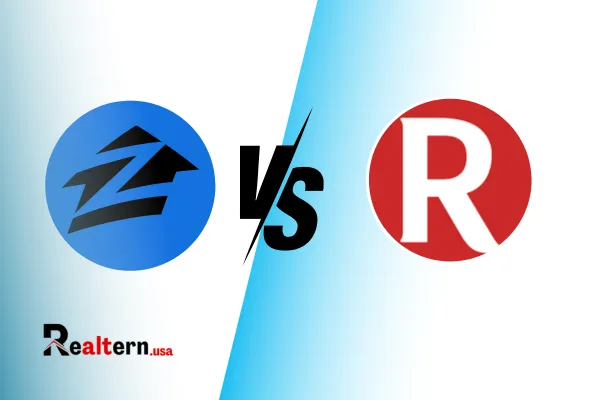
Zillow vs. Redfin: Which Platform is Better for Real Estate Investors?
Zillow vs. Redfin: Which Platform is Better for Real Estate Investors?
In the dynamic world of real estate investing, having the right tools can make all the difference. Zillow and Redfin are two of the most popular online platforms used by investors to find, analyze, and purchase properties. While both offer a wealth of information and user-friendly features, they each have unique benefits that cater to different investor needs. In this blog post, we'll explore the differences between Zillow and Redfin and how each can be beneficial for real estate investors.

Overview of Zillow and Redfin
Zillow: Launched in 2006, Zillow is one of the largest real estate websites in the United States. It provides a comprehensive database of property listings, including homes for sale, rental properties, and even foreclosures. Zillow is known for its Zestimate feature, which offers estimated property values.
Redfin: Founded in 2004, Redfin is both a real estate brokerage and a property search website. It not only lists properties but also employs its own agents, offering users the option to buy and sell homes directly through Redfin. Redfin's key features include the Redfin Estimate and detailed market insights.
Key Differences and Benefits for Investors
1. Property Listings and Data
Zillow:
Extensive Listings: Zillow boasts one of the most extensive property databases, including for-sale homes, rentals, and foreclosures. This makes it a versatile tool for investors looking for a wide range of properties.
Zestimate: Zillow’s Zestimate feature provides an estimated market value for properties based on a proprietary algorithm. While not always 100% accurate, it offers a good starting point for assessing property value.
User-Generated Content: Zillow allows homeowners to claim and update their property’s information, which can lead to more comprehensive property details.
Redfin:
Accurate and Updated Listings: As a brokerage, Redfin’s listings are updated every 5 minutes, ensuring investors have access to the most current data. This real-time information is crucial in competitive markets.
Redfin Estimate: Similar to Zillow’s Zestimate, the Redfin Estimate provides property value estimates. Redfin claims its estimates are more accurate, often citing a smaller margin of error.
Detailed Market Insights: Redfin offers in-depth market analysis and insights, which can be invaluable for investors looking to understand market trends and make data-driven decisions.
2. User Interface and Experience
Zillow:
Intuitive Interface: Zillow’s user-friendly interface makes it easy for investors to navigate and search for properties. The platform’s map feature allows users to visually explore neighborhoods and property locations.
Custom Search Filters: Investors can set up customized searches with specific criteria such as price range, property type, and more. Zillow also offers notifications for new listings that match saved searches.
Community and School Information: Zillow provides detailed information about local schools and community amenities, helping investors assess neighborhood desirability.
Redfin:
Integrated Brokerage Services: Redfin’s integration with its brokerage services means users can seamlessly connect with Redfin agents to schedule tours, make offers, and close deals. This end-to-end service can simplify the buying process for investors.
Tour Insights: Redfin agents provide detailed tour insights and reviews for properties, offering a professional perspective that can be highly valuable for investors.
Investment Tools: Redfin includes tools specifically designed for investors, such as rental estimates and potential return on investment (ROI) calculators.
3. Mobile Experience
Zillow:
Comprehensive Mobile App: Zillow’s mobile app is highly rated and provides all the features available on the desktop site. Investors can search for properties, view Zestimates, and receive notifications on the go.
Virtual Tours: Zillow offers virtual tours and 3D home tours, allowing investors to explore properties remotely, which is especially useful for out-of-state investments.
Redfin:
User-Friendly Mobile App: Redfin’s mobile app is also highly rated, offering real-time updates and notifications. Investors can book home tours and communicate with Redfin agents directly through the app.
Hot Homes: Redfin’s app highlights “Hot Homes,” properties that are likely to sell quickly based on market conditions, helping investors act fast on promising deals.
Conclusion: Which Platform is Right for You?
Both Zillow and Redfin offer powerful tools for real estate investors, but the best choice depends on your specific needs and investment strategy.
Choose Zillow if you:
Prefer a platform with a vast range of listings, including rentals and foreclosures.
Value user-generated content and community insights.
Enjoy using comprehensive search filters and intuitive mapping features.
Choose Redfin if you:
Want real-time, accurate property listings and market insights.
Prefer an integrated brokerage service that can handle your transactions.
Appreciate detailed tour insights and professional agent perspectives.
Ultimately, savvy investors might find it beneficial to use both platforms to maximize their property search and analysis capabilities. By leveraging the strengths of Zillow and Redfin, you can ensure you’re making well-informed decisions and finding the best real estate deals available.
For more tips and insights on real estate investing, visit www.morettaclub.com and join our community of informed investors. Happy investing!
